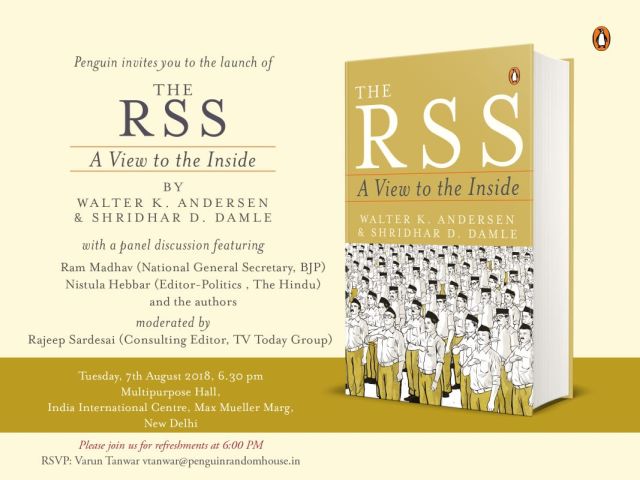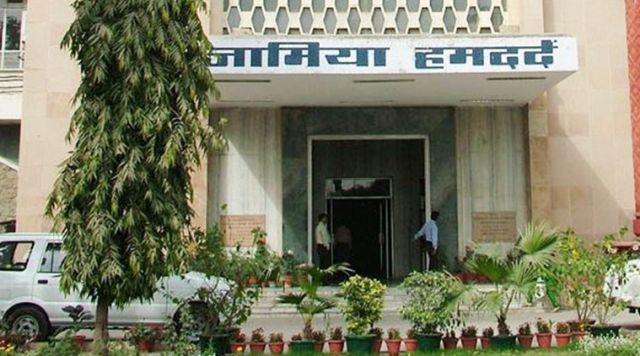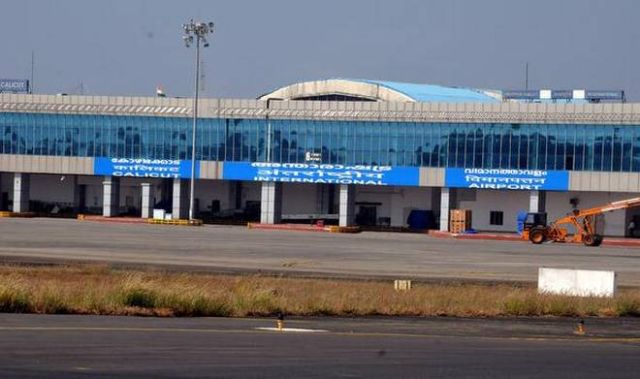
by admin | May 25, 2021 | News, Politics

Hussain Dalwai
New Delhi : Congress member of Parliament Hussain Dalwai on Friday sparked a controversy by defending triple talaq, saying that even Lord Ram doubted Sita and abandoned her, but he later apologised for his remark.
The Congress party has, however, distanced itself from his remark, saying once he has clarified on his statement, there is no point in making a comment on it.
Congress spokesperson Pawan Khera said: “Such statements have been made by many people earlier. Very serious remarks were made. Few days ago, Uttar Pardesh Deputy Chief Minister Dinesh Sharma had said that Mata Sita was a ‘test-tube baby’.
“Even Union Minister Mahesh Sharma had said in Parliament that Mata Sita was a fictional character. Such statements should not be made by anyone.”
Apologising for his remark, Dalwai said: “Whatever remark I made was wrong and I have apologise. I didn’t want to hurt anybody’s sentiment. It was being intentionally politicised.”
—IANS

by admin | May 25, 2021 | News
 Mumbai : Filmmaker Anubhav Sinha, who is enjoying the success of his last released film “Mulk”, feels that a section of people raise religious issues when election dates approach in the country.
Mumbai : Filmmaker Anubhav Sinha, who is enjoying the success of his last released film “Mulk”, feels that a section of people raise religious issues when election dates approach in the country.
Sinha was interacting with the media at the success party of “Mulk” along with actors Neena Gupta, Pawan Malhotra, Indraneil Sengupta, Barkha Bisht-Sengupta, Taapsee Pannu, Rishi Kapoor, Prachi Shah-Pandya, Shweta Tripathi, Ashutosh Rana and producer Deepak Mukut on Friday, here.
“Mulk” talks about harmony and brotherhood between Hindus and Muslims and Sinha feels that “the day when common citizens will realize that certain people are playing with their emotions by highlighting religious sentiments or issues, that day, everything will get sorted out.”
“People raise issue of religion when election dates come near in the country,” he said.
In the film, Rishi Kapoor plays a Muslim father who fights to reclaim his family’s honour after a member of their family takes to terrorism.
When asked what kind of compliments he is receiving for his film, Rishi said: “Many people told me that this film should be made compulsory to watch among school and college students for free so, what bigger compliment you can get than this”.
Manoj Pahwa’s performance was praised by the audience and sharing his experience of being part of the film, he said that the “credit for success of the film goes to writer and director of the film.”
“My role in the film is very different and emotional which I haven’t played earlier in my career. It was challenging for me because I had doubts in mind whether I can pull it off or not but then, I just followed my director’s vision and now the role has been appreciated by the audience and it feels really nice,” said Manoj.
Taapsee, who has once again worked in a courtroom with this film after “Pink”, says that “when I was doing the promotion of ‘Mulk’ I made a statement that if my film works then I will rename ‘court’ as my middle name and now that the film has worked I am feeling scared.”
“Mulk” has managed to collect around Rs. 13 crore at the box office since its release.
The film is produced by Anubhav Sinha and Deepak Mukut.
—IANS

by admin | May 25, 2021 | Books
 By Saket Suman,
By Saket Suman,
Book: The RSS – A View to the Inside; Authors: Walter K. Andersen and Shridhar D. Damle; Publisher: Penguin; Pages: 405; Price: Rs 699
In a book released this week, the Rashtriya Swayamsevak Sangh (RSS) has been projected as “the most influential cultural organisation in India today”. The implications of the Sangh’s functioning on India’s culture, particularly in the context of Hinduism, or what is called Hindutva, is well known but is this projection an appeasement of the all-powerful Sangh by providing them legitimacy in what is billed as a scholarly offering “backed by deep research”, or is it worthy praise bestowed in the light of its work in the culture domain?
The offering at hand is the sum total of all aspects that the authors felt have led the Sangh to take its present shape — that of the ideological parent of the ruling government with country-wide presence and strong political affiliations. It reveals many answers but, for reasons best known to the authors and publisher, it deflects, ignores and often beats around the bush when it comes to tackling the most pertinent issues related to the Sangh in contemporary times.
Let us begin with two chapters in the book titled “Ghar Wapsi” (Homecoming) and “Protecting the Cow”. Both of these issues have gained prominence ever since the current RSS-backed government came to power in 2014 and has led to numerous instances of mob violence and lynching. The horrors arising from some (of many) recorded instances have shaken the nerves of right-thinking individuals and has caused fear among the minorities, but the generosity with which the authors tackle the subject is appalling.
The book elaborates on why protecting the cow and ghar wapsi hold such immense significance for the RSS, charting the beliefs of its idealogues Hedgewar and Golwalkar, and then draws a case study around the BJP’s dealings with the beef issue in the Northeast, where the ruling party sort of accepted it as it is a norm in the region.
It quotes a slew of prominent RSS and BJP leaders who contend, like the Sangh’s prachar pramukh Manmohan Vaidya, that “we (the RSS) don’t tell society what to eat”, adding that even people who eat beef could become its members.
Their assertion, however, is in stark contrast to the ground reality where members of the Sangh’s affiliates have been directly responsible for horrendous acts of violence in the name of the holy cow, dearer to the organisation than those lynched for slaughtering and, supposedly, consuming its meat.
The authors fail to raise tough questions despite their “unprecedented access” to key leaders of the Sangh, who are otherwise largely unapproachable by mainstream media.
And then there is “What Does Hindutva Mean?”, an elaborate chapter on the philosophy of the Sangh. Here again, the Sangh’s leaders paint a rosy picture of all things good in their philosophy. They say, as the book quotes them, that India is “a civilisational nation state” and that the RSS has never talked of making Hinduism a state religion.
The book points, flatteringly, to RSS literature, which, according to the authors, speaks approvingly of the religious and cultural diversities. Again, there is no meeting point between their words and ground realities, and what is more, the authors just let that be, without probing further.
The book goes on to quote RSS chief Mohan Bhagwat as saying that forcing others to chant “Bharat Mata ki Jai” is wrong and that “all people living in the country are our own and we can’t force our ideology and thinking on them”. Really, the authors should have asked some questions here as well, but they do not.
Moving on, there is a chapter on “Indianising Education”, where the authors claim that within months of the BJP’s victory in the 2014 general election, the then HRD Minister Smriti Irani “met with senior RSS figures” who wanted “the essentials of the Indian culture” to be reflected in school curriculum across the country.
It further mentions that in view of the “importance of the HRD Ministry in implementing the RSS goal of ‘indianising’ education”, the party selected Prakash Javadekar to replace the controversial Irani.
“Just a month after assuming his new post, Javadekar called a meeting that included senior RSS and BJP officials and other constituents of the Sangh parivar engaged in education,” the book says.
The motive of this meeting, says the book, was to discuss “the draft education policy earlier initiated by Irani” and to seek “suggestions to instill nationalism, pride and ancient Indian values in modern education”.
Notably, the over-400-page book’s actual text runs till page 256, after which is the appendix and notes section, which go on for about 150 pages. It also charts brief biographies of the RSS leadership, in glowing terms, and its constitution.
Even though this book is a missed opportunity as there is much more — and of utter significance both to the RSS and the country — that demanded exploration, it is not devoid of merit.
This book’s big achievement is in charting the journey of the Sangh — how the once banned organisation came into the mainstream, mobilised voters and played a crucial role in the 2014 general election, as it is expected to play in the coming election too.
But in its totality, the sense that a reader gets after reading this book is a glorification of the Sangh. It describes the inner working mechanisms of the organisation but fails to point out the outcomes resulting thereby.
The book surely has a lot of substance but can one possibly look at a raging fire and ignore those being burnt in it? This book does just that.
(Saket Suman can be contacted at saket.s@ians.in )
—IANS

by admin | May 25, 2021 | Corporate, Corporate Buzz, News

Jamia Hamdard
New Delhi : With growing cooperation between Saudi Arabia and India in the fields of education and health, Saudi Arabia has donated $5 million to the Jamia Hamdard University in New Delhi as a contribution towards the cost of building the medical college and expanding the existing Majeedia Hospital.
The new building of the hospital will be named after the late custodian of the two holy mosques in Makkah and Medina, King Abdullah bin Abdulaziz Al-Saud, an announcement by the Saudi Embassy here said.
A memorandum of understanding was signed between Al-Imam Mohammad bin Saud Islamic University and the Jamia Hamdard University in March 2014 envisaging implementation of an exchange programme that will include exchange of staff, students, curricula and research collaborations as well as joint organization of seminars and conferences.
Saudi Ambassador Saud bin Mohammed Al-Sati hailed the agreement between the two universities, terming it as “an excellent initiative that comes in the context of promoting cultural and scientific cooperation between the two friendly countries”.
—IANS

by admin | May 25, 2021 | News, Politics

Calicut Airport
New Delhi : Aviation regulator DGCA on Thursday granted permission to operate wide-bodied aircraft at Calicut airport that will see Saudi Arabian airlines operate direct flights to the Kingdom from the city in Kerala, Civil Aviation Minister Suresh Prabhu said.
The operation of international flights from Calicut would also likely lead to its becoming an embarkation point from Haj pilgrims, Prabhu told reporters here at a briefing. He was accompanied by Minister of State for Civil Aviation Jayant Sinha and Tourism Minister Alphons Kannanthanam.
“The DGCA (Directorate General of Civil Aviation) has today decided to start operations from Calicut, which will facilitate a large number of people from Kerala who are living abroad,” Prabhu said.
Sinha said that the Saudi Arabian national carrier plans to fly aircraft like A330 and Boeing 777 to Calicut and technical clearance had been given for these wide-bodied planes.
The Airports Authority of India (AAI) had suspended wide-bodied aircraft operations at Calicut airport in May 2015 following a directive from the DGCA, citing safety concerns.
“Safety and passenger convenience are our primary concern and we have to ensure that these are not compromised,” Prabhu said.
“AAI has informed us that all mitigation measures (to enable wide-bodied flights) will be in place by August 20,” he said.
Ministry officials said the Saudi Airlines had not intimated a date for starting operations from Calicut.
Work is underway to construct a new international terminal at Calicut which will increase its current passenger handling capacity of 3.5 million people per annum to 5 million when completed, officials said.
“Calicut is likely to be an embarkation point for the Haj pilgrimage from next year,” Sinha said.
It was also announced that Kerala’s fourth international airport at Kannur will start commercial flight operations in October.
“It is rare that a new greenfleld airport like Kannur starts with operating international flights,” Prabhu said.
Kerala will also soon start twin-engine sea-plane operations following the DGCA’s issuing of the regulatory framework for such aircraft and the waterdrome certification, the Minister announced.
“Operators can now apply for the licence to ply sea-planes on specified routes. Other possible destinations for such services can be island areas like Lakshadweep and Andamans,” Sinha said.
—IANS





